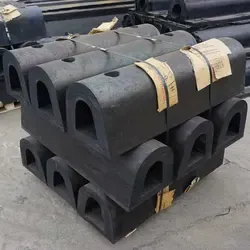Nov . 22, 2024 06:48 Back to list
sliding patio door bottom seal
Understanding Sliding Patio Door Bottom Seals Importance and Installation
Sliding patio doors are a popular choice for homeowners looking to enhance natural light, create a seamless indoor-outdoor flow, and maximize space. However, with the benefits of these stylish doors come certain challenges, particularly when it comes to energy efficiency and weatherproofing. One critical component that often gets overlooked is the bottom seal of the sliding patio door. This article explores the importance of these seals, their types, common issues, and guidance on installation and maintenance.
Why Bottom Seals Matter
The bottom seal of a sliding patio door plays a fundamental role in protecting your home from the elements. It acts as a barrier that prevents drafts, water, dirt, and pests from entering your living space. A high-quality seal ensures that your home remains energy efficient, helping to maintain a comfortable temperature and potentially reducing heating and cooling costs. Additionally, a well-sealed door minimizes noise pollution, allowing you to enjoy peace and tranquility in your home.
Types of Bottom Seals
There are generally two main types of bottom seals used in sliding patio doors rubber seals and brush seals.
1. Rubber Seals These are made of durable rubber materials that provide excellent insulation and weather resistance. They are often used in climates that experience harsh weather conditions, such as snow, rain, or strong winds, as they effectively prevent water and air infiltration.
2. Brush Seals These seals consist of bristles that function similarly to a broom. They effectively sweep away dirt and debris while providing a protective barrier against drafts and insects. Brush seals are particularly useful in less severe weather conditions.
Common Issues with Bottom Seals
Over time, bottom seals can wear out due to exposure to the elements, heavy usage, or improper installation. Some common issues include
- Cracking or Deformation Extreme weather conditions can cause rubber seals to harden or crack, leading to inefficient sealing and increased energy costs.
sliding patio door bottom seal

- Loss of Flexibility As seals age, they may lose their flexibility. This can create gaps that let air and water seep in.
- Accumulated Dirt and Debris Brush seals can become clogged with debris, reducing their effectiveness and leading to the need for cleaning or replacement
.Installation and Maintenance
Installing or replacing a sliding patio door bottom seal can be a simple DIY project that enhances the efficiency of your doors. Here’s a step-by-step guide
1. Choose the Right Seal Measure the width of your door frame to determine the appropriate size and type of seal. Ensure that the seal is compatible with your specific sliding door model.
2. Remove the Old Seal Use a utility knife to carefully cut away the old seal. Take care not to damage the door frame during this process.
3. Clean the Area Once the old seal is removed, clean the area thoroughly to remove any debris or adhesive residue. This will help the new seal adhere properly.
4. Install the New Seal Align the new bottom seal with the door frame and press it firmly into place. Depending on the type of seal, you may need to use screws or adhesive for a secure fit.
5. Test the Door Open and close the door several times to ensure the seal is functioning correctly and there are no gaps.
Conclusion
A sliding patio door bottom seal is a small but mighty component that plays a significant role in keeping your home comfortable and energy-efficient. By choosing the right type of seal, conducting regular maintenance, and addressing issues promptly, you can enhance the performance of your sliding patio doors while safeguarding your home from the elements. Whether you’re upgrading an old seal or installing a new door, paying attention to this detail can lead to greater comfort and savings over the long term.




